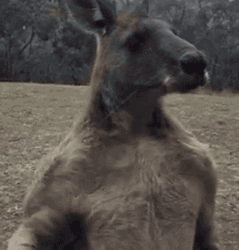I voice act Kik: quzapa Snap: Ethantschaller The Nerd of the Herd Single Little.
Don't wanna be here? Send us removal request.
Text
Heading to the mall of america today! Cant wait to visit the Nickelodeon park and lego store there!

14 notes
·
View notes
Text

I Do not take credit for this. Found on the super smash bros subreddit absolutely love it.
1 note
·
View note
Photo

New find could help save Galapagos hammerhead sharks
The sharks give birth in secluded bays that scientists worry may be exposed to fishing
Hammerhead sharks, with their unique, wide-eyed appearance, are among the most iconic species in the Galapagos. But as the sharks become increasingly endangered, scientists are searching for ways to help their population rebound.
One way they’re doing it is by searching for where hammerhead sharks have their babies (called pups). Past studies have documented where and why some of the region’s hammerhead populations migrate, but scientists have been struggling with one mystery—where the females that live around the Galapagos’s Darwin and Wolf Islands go to have their pups. Darwin and Wolf Islands have some of the world’s highest concentrations of sharks, meaning the pregnant females that live there contribute to the population of the species overall.
Now, thanks to tracking data from tags attached to some of the sharks, scientists have some of the first evidence showing pregnant hammerheads from those Galapagos islands may be migrating to mainland South American countries like Ecuador to give birth. If they can further confirm these findings, it may help governments better protect the species before it slides closer toward extinction.
Read more here.
Written by Sarah Gibbens
Photo by Jeff Wildermuth
77 notes
·
View notes
Text

8 notes
·
View notes
Text
200 Follower Hype
Just realized I hit 200 followers. Thx everyone. Sorry I'm not active as much as I'd hope. If you ever wanna talk my kik is always open.
KIK -Quzapa
0 notes
Link
Pulling air into the gut helps sphinx hawk moth larvae make their own teakettle howl.
32 notes
·
View notes
Link
These birds were among the most massive animals in their neighborhood.
Image by Brian Choo
184 notes
·
View notes
Text
Love getting blocked for literally just being super busy today. Like wtf? Sorry I had to work all day then deal with getting my new car 😑👌
1 note
·
View note
Photo

Have you ever seen homosexual behaviour in spiders? You have now.
These are two male Monocentropus balfouri. When there are a large number of males in the communal this is a very common sight. They even ignore receptive females in favour of other males. I’ve seen this behaviour in Holothele incei (another communal species) as well.
6K notes
·
View notes
Link
This is Nigel:

And this is Nigel with his two concrete friends. (Nigel is in the background. The two gannets in front are made of concrete.)

Excerpt:
The story of a lonely seabird named Nigel who tried to woo a mate that had a heart of stone and died on an uninhabited island off New Zealand has captivated many on social media.
Footage of the bird preening and cooing as he fruitlessly courted a decoy made of concrete has been watched obsessively online. Though his chosen partner kept a cold silence, Nigel, a gannet, won the affection of visitors and conservationists alike.
His solitary life shined a light on a yearslong effort by an army of conservationists, devoted volunteers and others to repopulate his species on the island.
News of the seabird’s death in late January hit the island’s caretakers and social media users hard.
“It seems like such a wrong ending for Nigel to die now,” said Chris Bell, 37, a ranger for the New Zealand Conservation Department, who found the seabird dead in his nest. “Just when it looked like it could get better for him.”
Nigel first landed on Mana Island a few years ago (conservationists differ on the year). Mana is about 16 miles, or 25.3 kilometers, northwest of Wellington, the capital. It’s also the site of an ambitious effort to establish a flourishing colony of Australasian gannets, which can be found in social clusters off the coast of Australia and New Zealand. But types of gannets have settled all over the world, including in Scotland.
In the 1990s, conservationists set up concrete gannets on the western side of Mana to lure real birds. They painted the decoys’ beaks yellow, the wingtips black, the plumage white. They played seabird calls over solar-powered speakers.
On the very first day, two gannets swooped in, Mr. Bell said by phone early Saturday. Conservationists congratulated themselves on their instant success. But soon, the birds flew away, and the project stalled.
Then came Nigel.
He quickly took a liking to one of the concrete replicas, according to Mr. Bell, who says he’s the only full-time employee on the island. Month after month, the bird cozied up to his chosen mate, but “she” remained aloof.
69 notes
·
View notes
Photo

Knoetschkesuchus langenbergensis
Artwork by Joschua Knüppe
This small, short-snouted crocodile relative lived near the end of the Jurassic Period. Judging from the shape of its teeth, it was likely a land predator, or even an omnivore.
—
252MYA creates custom-made artwork for private collections and editorial, scientific, or educational project.
183 notes
·
View notes
Video
Crab Spider, Epicadus heterogaster by Andreas Kay Via Flickr: they attract pollinating insects by reflecting ultraviolet (UV) light like flowers: www.nature.com/articles/s41598-017-09456-y from Ecuador: www.flickr.com/andreaskay/albums
299 notes
·
View notes
Video
my animal behavior professor just emailed me this
234K notes
·
View notes






